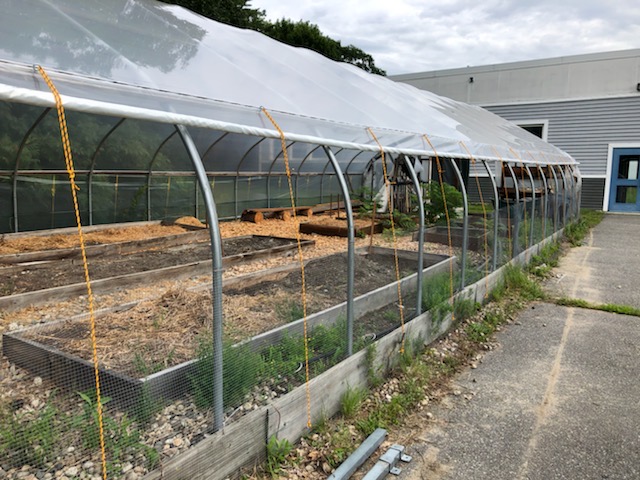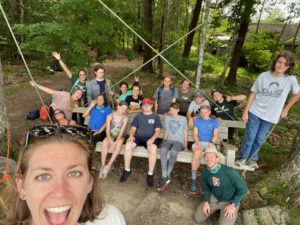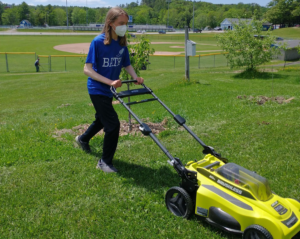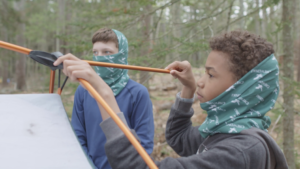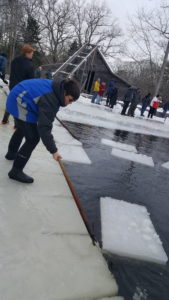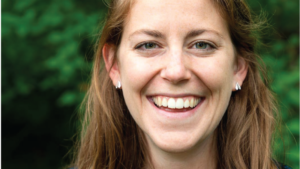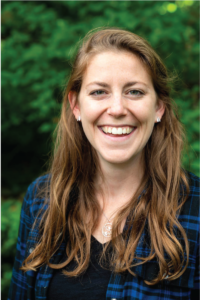
This summer, Chewonki Waypoint Coordinators Austin Muir and Izzy Janzen collaborated with Bath Middle School to transform a neglected greenhouse on the BMS campus into a light-filled outdoor classroom space. The revitalized structure is now available to use by BMS faculty and students for socially distanced outdoor learning. Chewonki Waypoint hopes to use the greenhouse this spring in their eighth-grade Engaging with the Community curriculum.
Karen Curley, a social worker at Bath Middle School, initiated the greenhouse project in 2006 and received a grant to fund its construction. Former BMS staff member and Bath City Arborist Tim Hoerth built the structure, and faculty took turns using and caring for the structure over the next decade and a half. After a gap in activity, however, the greenhouse fell into disrepair. “The plastic covering had so many rips that it was essentially open air,” says Janzen. Weeds had taken over the garden beds, and previously organized tools and equipment were no longer in their proper places.
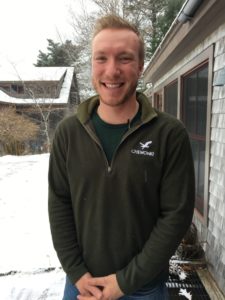
Curley approached Muir and Janzen in late 2019 to see if Waypoint would help revitalize the space, and the pair quickly agreed. By June, Muir and Janzen had secured funding for new plastic covering through Chewonki’s Whole Schools Whole Communities initiative, funded by the Elmina B. Sewall Foundation. The pair began visiting the site in June to weed, tidy and prepare for the re-skinning.
Janzen, Muir, and Curley’s work on the greenhouse culminated on a Sunday in July. Janzen and Muir met up with a small group of dedicated volunteers, including Izzy Ruffin, one of our farmer educators, and Göran Johanson, of Goranson Farm. Ruffin and Johanson provided the necessary greenhouse re-skinning experience to restore the structure, while the rest provided energy, enthusiasm, and elbow-grease. By early afternoon, the group finished installing the new plastic, and the greenhouse was ready to go.
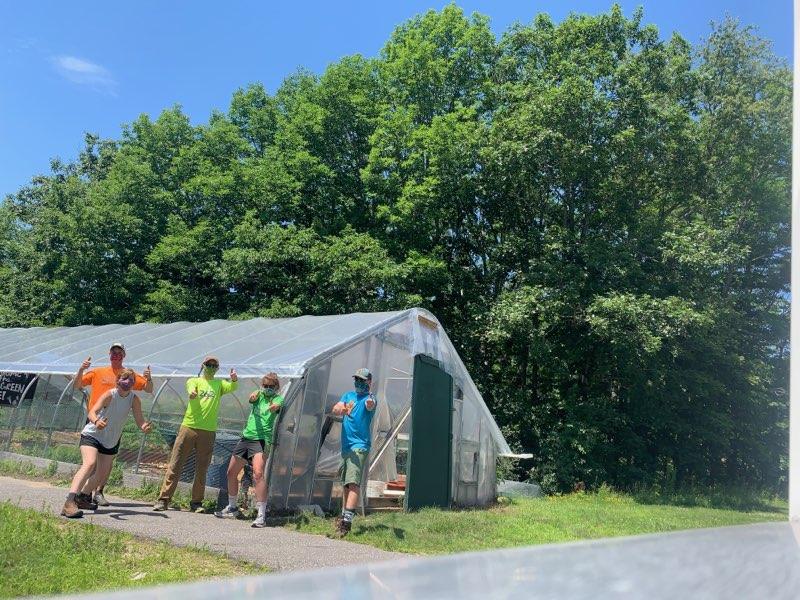
Now the greenhouse is available to BMS faculty as an outdoor learning space and is being used by science teachers for a small radish-growing experiment with students. The plastic walls can roll up to let in fresh air or tie-down to keep out chills. Janzen and Muir hope to incorporate the space into their spring curriculum (they’ve already purchased compost for the soil).
We are looking forward to seeing this space foster learning and growth in the years to come.
